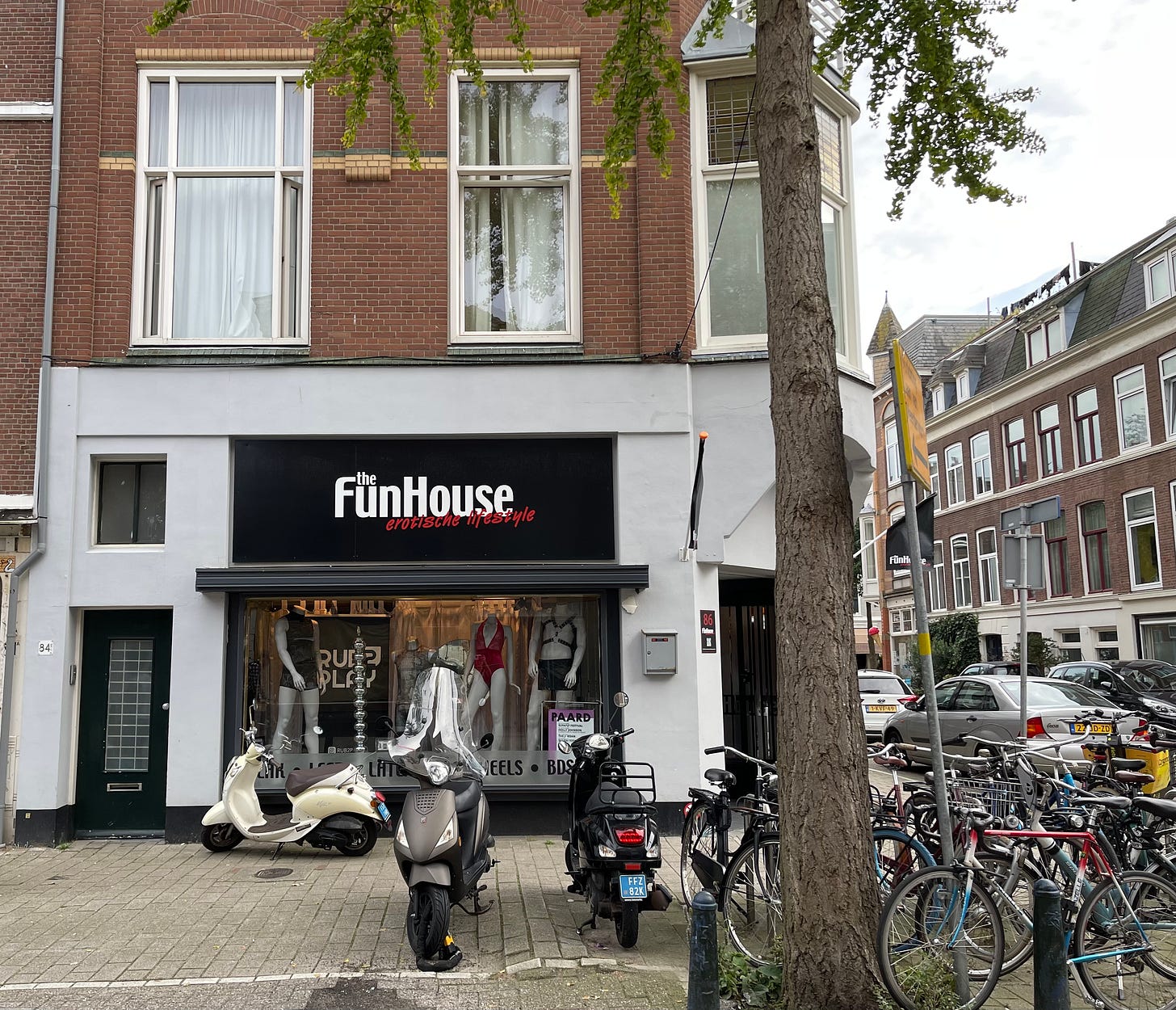At the end of September, I went to the Netherlands to visit some friends and to explore some of the things that I didn’t get to see when I travelled there last year for a weekend.
Thanks to the excellent tutelage of one of my friends, I successfully learned how to ride a bike that had pedal brakes. I tried pumpkin flavored cheese and ate vegetarian bitterballen. I ate a lot of pancakes. I saw the Anne Frank house for the first time and went to the National Holocaust Names Memorial. Allowed myself to feel grief, to take in the magnitude Anne’s story and the loss of all the people to whom those names on the walls belonged. I discovered the glory of electric bikes while on a bike tour and saw one of the fields where pilots in the Dutch Resistance used to land - plus lots of super cute cows.
I bought myself a raincoat, which made me feel like a local. I navigated the postal system in the Netherlands to send a birthday package to my niece and had the joy of perusing a few Dutch grocery stores. I went to cafes and coffee houses but didn’t manage to get to the coffee shops, as I didn’t want to be even sleepier than I was. I got to enjoy their amazing public transportation system.
I also, probably no surprise here, explored some of the sex-related tourist activities in the city. As someone who has been fan girling over the Netherland’s approach to sexuality since college, I was very excited to explore some of it in person.

A little context:
The Netherlands is known for its comprehensive sex education – at least in the sex educator world. As a result of a 2012 law, all students in primary schools have to receive sex education. It’s flexible in the way that it’s taught, but it has to cover specific, age appropriate topics — among which are sexual diversity and skills to protect against sexual coercion, intimidation, and abuse.
The Netherlands has some of the best outcomes when it comes to teen sexual health — including low rates of unintended pregnancies and low rates of STIs and HIV. They have high rates of contraception usage, and most Dutch teens report that their first sexual experiences were wanted and fun. Pretty cool, right?
The Netherlands was also the first country in the world to legalize same-sex marriage. When you walk around the city even today, there are rainbow flags everywhere.
There’s also just, what seemed like to me, a relaxed approach towards sex. When I was walking around The Hague, I saw a giant poster on the side of a building for a play called “Let’s Talk about Sex” that was being performed by the International Theater Amsterdam.
There are sex toy shops all over too – and not just in the red-light district. As I was walking with my friend through The Hague, we saw a sex toy shop in the middle of a very normal looking residential part of the city, which was super cool!
Furthermore, sex work has been legal since 2000 in the Netherlands. It is highly regulated, which means that you can work as a sex worker, but you have to register as one in order to start work and there are many regulations that you have to follow in relation to starting work, where you can work, and how you do your work.
There are several options for where people can work, including the windows that are often referenced when people speak about sex work in the Netherlands. While there are three red light districts in Amsterdam, it’s not just sex work that happens in these areas: these areas also have restaurants, bars, stores, and apartments.
I usually try to go to a sex toy shop when I visit an area to see what it is like, but since I was in the Amsterdam area, there was much more to visit! I think in part because of their approach to sex, and in part because of this red-light district and the legalization of sex work, Amsterdam has more sex-related tourist attractions and opportunities than other places I’ve been to.
First, I went to the Erotic Museum. I’ve been to a few of these in different cities, and


